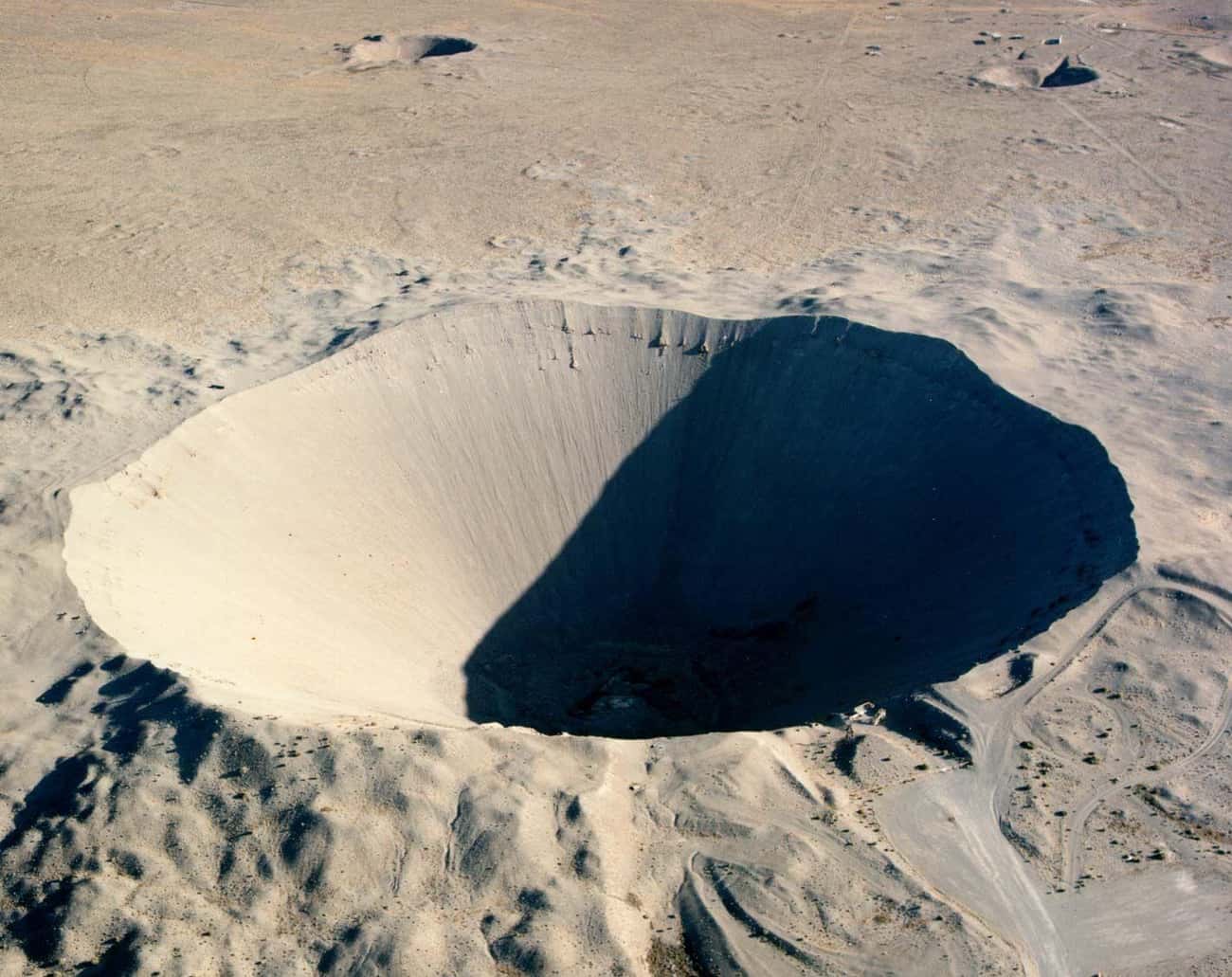
All The Things That Happen To Your Body During A Nuclear Explosion
Is it possible to live through the immediate effects of a nuclear explosion? Will you die instantly, or will your demise be slow and painful? It might be a morbid thought, but knowing how a nuclear explosion affects the body and how to protect yourself could save your life if you are unfortunate enough to experience an atomic bomb.
Many factors determine how a nuclear blast would affect you. The size of the bomb, whether it explodes in the air or on the ground, the geographical layout of where the bomb hits, how far away you are from ground zero, and what types of buildings and materials are nearby all play into how a nuclear attack could affect you.
- Photo: Federal Government of the United States / Wikimedia Commons / Public Domain
If You're At Ground Zero, The Blast Will Obliterate You
Anyone at ground zero - the point immediately above or below detonation - is unlikely to survive. According to Brooke Buddemeier, a health physicist at Lawrence Livermore National Laboratory, the only people who would make it through a nuclear blast at such a close range are those who happen to be in a fortified building or underground bunker.
If you are not fortunate enough to be in one of these safe spaces and are still within a few mile radius of the bomb, your body will be instantaneously reduced to its basic minerals from the heat of the blast. It can reach up to 300,000 degrees Celsius - 300 times hotter than the temperature used to cremate human bodies.
Mercifully, this will happen so quickly you won't see it coming. All that will be left where you stood will be a crater from the explosion or a nuclear shadow like those in Hiroshima.
- Video: YouTube

The Wind Can Kill You If You're Within A Half-Mile Radius
If you are within a half-mile of the explosion and somehow survive the blast, thermonuclear radiation, shockwave, and ultraviolet light, you are still not safe. Winds from the explosion can move at more than 400 miles per hour - double the speed of a Category 5 hurricane.
The human body can withstand this force, but it cannot survive if large flying debris strikes at this speed. This wind speed is enough to knock down most structures, so even if you are indoors and shielded from the initial radiation, it may not matter - the building could crush you as it collapses.
The shockwaves of air from the blast cause a change in air pressure, too, and if the wind doesn't destroy the building you're in, this change can crumble it. It's all so sudden that even strong structures often cannot withstand the blast.
You Can Be Burned Alive If You're Within A 3-Mile Radius
Those closest to the blast site have it the worst, but what happens if they are not instantly incinerated? Thermal radiation goes out in a pulse, and it is so intense it can scorch a person's skin and ignite widespread fires.
On the inside, things get horrifyingly heated, too. Your lungs may rupture, like your eardrums, and you may have internal bleeding from the force of the blast. You could die from asphyxiation or organ damage. All of this happens within about a 3-mile radius of the blast, in around 10 seconds.
You Can Suffer Lethal Burns Within A 5-Mile Radius
A 1-megaton nuclear bomb can cause first-degree burns - or the equivalent of a bad sunburn - roughly 7 miles away from the blast point. If you're within 6 miles of the explosion, those burns become second-degree.
Third-degree burns, or a full-thickness burn, can happen within 5 miles of the blast. This type of burn destroys all three layers of your skin and can even damage muscles and bones. If 24% of your body is covered in this type of injury, it can be lethal.
Light can also cause burns in some cases. If you're close enough to the blast, the intensity of the light can cause first-, second-, and even third-degree burns. Second-degree burns, though not as bad as third-degree burns, can still turn deadly. If you get them over 30% of your body or more, you can go into shock, which can kill you quickly if you don't receive medical care.
At 5 Miles, You Can Permanently Lose Hearing
Even though journalist John Hersey described the blast of an atomic bomb as a "noiseless flash," the air blast can be deafeningly loud. Since light travels faster than sound, you may become flash-blind in a 5-mile radius before your hearing is affected.
At this distance, the blast area pressure is 5 pounds per square inch. At this pressure, your eardrums can easily rupture, which can lead to infection or deafness.
If you are farther than 5 miles from the blast, your hearing could still be affected. You could get tinnitus, a ringing in the ears. Studies show people who suffer hearing damage from even small explosions can experience hearing problems for years, if not life.
- Photo: United States Department of Defense / Wikimedia Commons / Public Domain
At 7 Miles, You May Still Suffer Lethal Burns
At a little less than 7 miles away, nuclear blasts send out a flood of ultraviolet light. This intense light can burn people so severely, it disables their limbs - something that may lead to medical amputation down the line.
These ultraviolet burns from thermal radiation happen so quickly that victims often don't feel any pain - the light destroys pain nerves before they can feel the damage. You likely wouldn't feel your body being severely burned, even if you did go into shock from the experience.
Flash Blindness Can Cause Damage Up To 53 Miles Away
The most lethal effects of a nuclear bomb happen within a 10-mile radius of the blast site, but that doesn't mean everyone outside this zone comes out unscathed. Temporary flash blindness can occur in people up to 53 miles away from ground zero.
While the condition can clear up in a few minutes, the problem with flash blindness is it doesn't only happen to people in houses or sitting down comfortably. Anyone who looks directly at the blast while driving a car will be unable to see, meaning many people on the road could be instantly driving blind. In this moment, those drivers can cause serious damage to themselves and others. Even if the blast isn't affecting your body directly, its effects could lead to injury or death.
If you are closer to the blast and look directly into the explosion, the flash can focus through your eyes' lenses, causing your retinas to burn. Retinal burns, or photic retinopathy, can permanently damage eyesight.
Most Technology Will Not Be Able To Help You
In the case of a nuclear explosion, there is an effect created called an electromagnetic pulse, or an EMP. The nuclear blast generates this short burst of electromagnetic energy, which can cause voltage surges or disruptions in many pieces of technology.
These pulses happen quickly, and they can cause electronic devices to turn off or become permanently damaged and disabled. This could prove lethal for people with pacemakers or any other sort of technology keeping them alive.
You wouldn't be able to call for help because your cellphone would be knocked out, too. Some experts say a nuclear bomb makes it dangerous to get into a car. It's also worth noting that, depending on how high above the ground a nuclear weapon detonates, the EMP pulse could span hundreds of miles.
- Photo: New Jersey National Guard / Flickr / CC BY-ND 2.0
The Radiation Could Take Weeks Or Years To Kill You
One of the biggest long-term effects of a nuclear blast is the radiation, and not just that which settles during fallout. If you are close to the initial blast and survive, it doesn't mean you're out of the woods - you've still likely been contaminated with radiation.
Radiation can cause chemical changes in your DNA at high-enough doses, and if you're close to a nuclear blast, those levels can be deadly, damaging or killing your cells. The radiation can cause immediate burns (including fatal ones), and it can also lead to cancer.
While burns might kill you in the short run, it's cancer and other health problems that can lead to a slow death. Sometimes, it may take years or decades to occur, even though the initial changes happened directly after the nuclear blast. Even small doses of radiation seem to be harmful, according to scientists.
- Photo: Unknown / Wikimedia Commons / Public Domain
There Are A Few Ways To Prevent Being Hurt By The Blast
You can survive a nuclear explosion from almost anywhere in the blast radius. Being at least 7 miles away or more keeps you safer from some of the more major burns, but it's still possible to stay alive if you're closer. There have been cases where a few lucky people survived atomic bomb blasts even though they were at ground zero. It takes being in a very sturdy building or a basement at the moment of the explosion to survive, though, so in those cases, it's all about chance.
On the other hand, if you are a mile or more away from the explosion, you may have an opportunity to save yourself. If you have an underground basement, it's a good idea to head there immediately rather than trying to flee in a car or on foot. Also, try to cut off the flow of outside air, as it can bring radiation with it.
Other than that, it's all about being prepared. Have nonperishable food and water stored in a safe, underground area, and be prepared to stay there for 24 hours. The radiation from the bomb will decrease drastically after a day has passed - by up to 80% - which gives you a higher chance of surviving the lethal aftereffects.




























